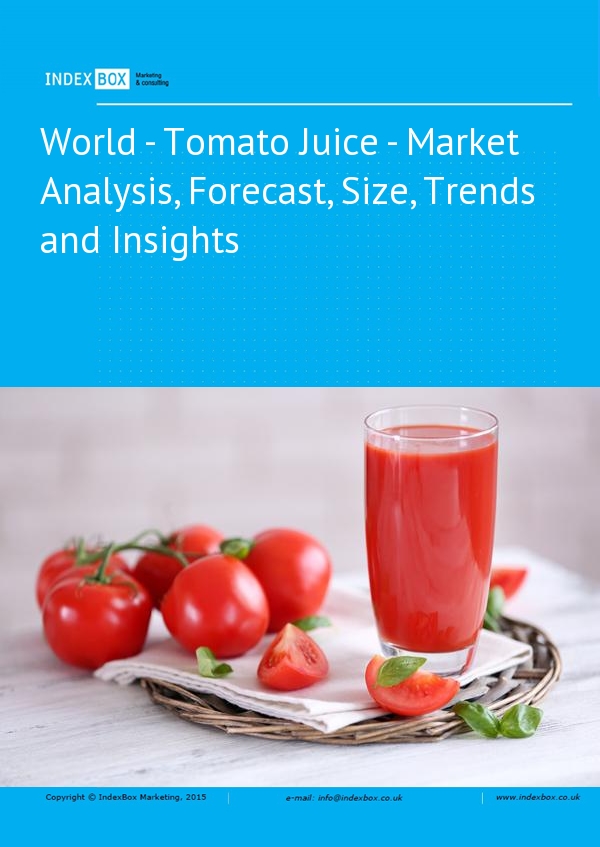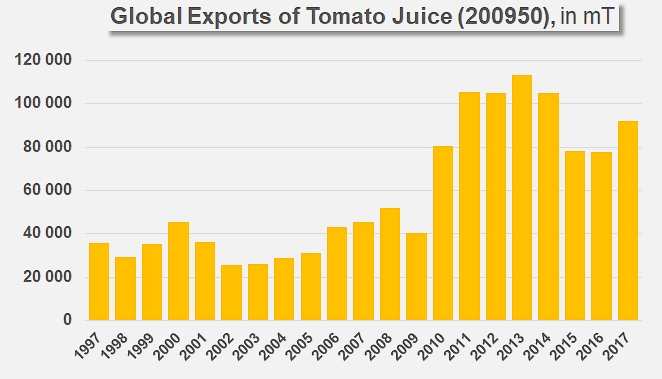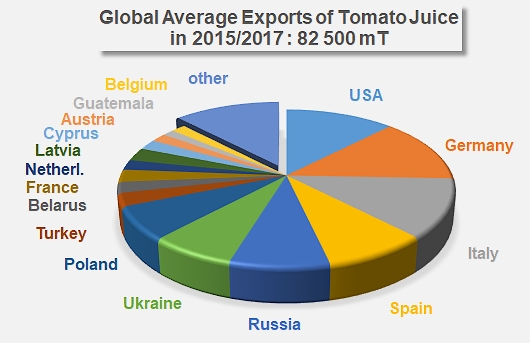Respect for your privacy is our priority
The cookie is a small information file stored in your browser each time you visit our web page.Cookies are useful because they record the history of your activity on our web page. Thus, when you return to the page, it identifies you and configures its content based on your browsing habits, your identity and your preferences.
You may accept cookies or refuse, block or delete cookies, at your convenience. To do this, you can choose from one of the options available on this window or even and if necessary, by configuring your browser.
If you refuse cookies, we can not guarantee the proper functioning of the various features of our web page.
For more information, please read the COOKIES INFORMATION section on our web page.


 Overall, the market volume increased at an average annual rate of +1.3% over the period from 2007 to 2017. In wholesale prices, global tomato juice consumption stood at USD 4.2 billion in 2017, an increase of 2.3% against the previous year (IndexBox estimate). This figure reflects the total revenue of producers and importers (excluding logistics costs, retail marketing costs, and retailers’ margins, which will be included in the final consumer price).
Overall, the market volume increased at an average annual rate of +1.3% over the period from 2007 to 2017. In wholesale prices, global tomato juice consumption stood at USD 4.2 billion in 2017, an increase of 2.3% against the previous year (IndexBox estimate). This figure reflects the total revenue of producers and importers (excluding logistics costs, retail marketing costs, and retailers’ margins, which will be included in the final consumer price).




























